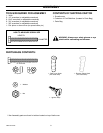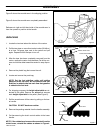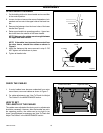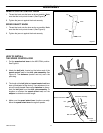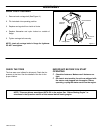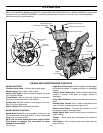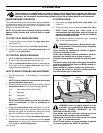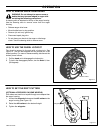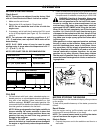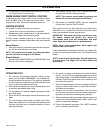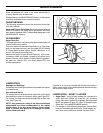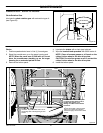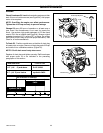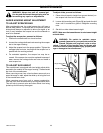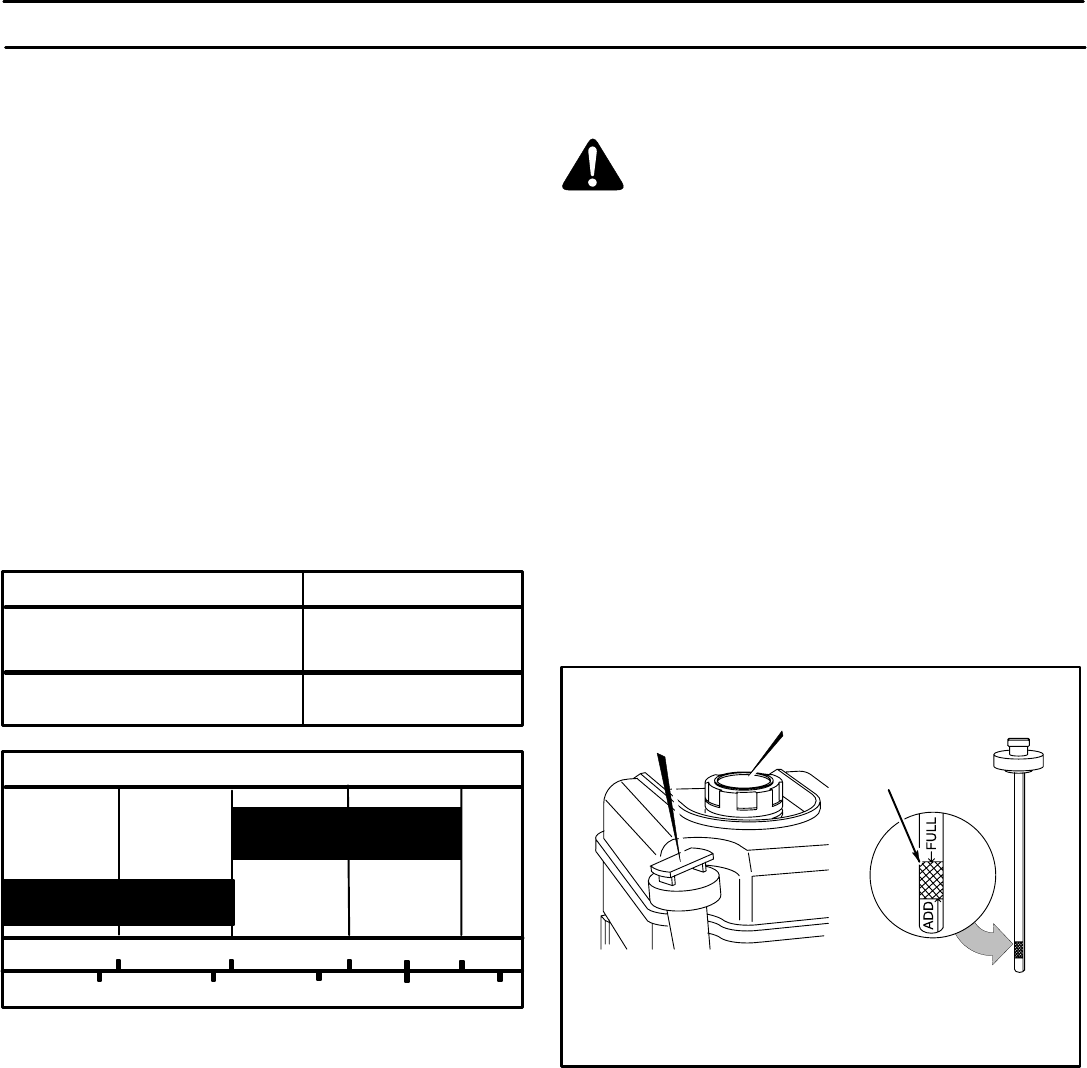
OPERATION
16
MTF-0410104L
BEFORE STARTING ENGINE
Check the oil
NOTE: The engine was shipped from the factory filled
with oil. Check the level of the oil. Add oil as needed.
1. Make sure the unit is level.
2. Remove the oil fill cap/dipstick. Check the oil.
NOTE: Do not check the level of the oil while the
engine runs.
3. If necessary, add oil until the oil reaches the FULL mark
on the oil fill/cap dipstick (see Figure 16). Do not add too
much oil.
NOTE: For extreme cold operating conditions of 0_F
(-18 _ C) and below, use a synthetic 0W30 motor oil for
easier starting.
NOTE: S.A.E. 5W30 motor oil may be used to make
starting easier in areas where the temperature is 20_ F.
(-7 _ C) to 0_F (-18_ C).
NOTE: SEE CHART FOR OIL RECOMMENDATION
0_F (-18_ C) and below
0_F (-18_ C) and above
TYPE OF OILTEMPERATURE
synthetic 0W30
S.A.E. 5W30
_F - 20 0 20 32 40
_C -30 -20 -10 0 10
SAE VISCOSITY GRADES
5W30
synthetic 0W30
FILL GAS
1. Fill the fuel tank with fresh, clean, unleaded regular, un-
leaded premium, or reformulated automotive gasoline a-
long with a fuel stabilizer (follow instructions on fuel
stabilizer package). DO NOT use leaded gasoline. We
recommend that fuel stabilizer be added to the fuel each
time that gasoline is added to the fuel tank.
NOTE: Winter grade gasoline has higher volatility to
improve starting. Be certain container is clean and
free from rust or other foreign particles. Never use
gasoline that may be stale from long periods of
storage in the container.
CAUTION: DO NOT use gasoline containing any
amount of alcohol as it can cause serious damage to
the engine or significantly reduce the performance.
2. Check to make sure that spark plug is tightened securely
into engine and spark plug wire is attached to spark plug.
If torque wrench is available, torque plug to 18-23 ft-lbs.
WARNING: Gasoline is flammable. Always use
caution when handling or storing gasoline. Do
not add gasoline to the fuel tank while snow-
thrower is running, hot, or when snowthrower is in an
enclosed area. Keep away from open flame, electrical
sparks and DO NOT SMOKE while filling the fuel tank.
Never fill the fuel tank completely; but fill the fuel tank
to within 1/4-1/2 inch (6.5-12.5 mm) from the top to pro-
vide space for the expansion of the fuel. Always fill fuel
tank outdoors and use a funnel or spout to prevent spil-
ling. Make sure to wipe up any spilled fuel before start-
ing the engine.
Store gasoline in a clean, approved container, and keep
the cap in place on the container. Keep gasoline in a
cool well ventilated place; never in the house. Never
buy more than a 30 day supply of gasoline to assure
volatility. Gasoline Is intended to be used as a fuel for
internal combustion engines; therefore, do not use
gasoline for any other purpose. Since many children
like the smell of gasoline, keep it out of their reach be-
cause the fumes are dangerous to inhale, as well as be-
ing explosive.
FULL
Figure 16
Oil Fill Cap/Dipstick
Fuel Tank
BEFORE STOPPING THE ENGINE
Run the engine for a few minutes to help dry off any moisture
on the engine.
To help avoid possible freeze-up of the starter, proceed as
follows:
Recoil Starter
With the engine running, pull the starter rope with a rapid
continuous full arm stroke three or four times.
NOTE: The unusual sound made by pulling the starter
rope will not harm the engine or the starter.
Electric Starter
1. Connect the power cord to the switchbox and then to a
wall outlet.



